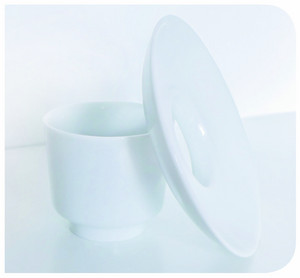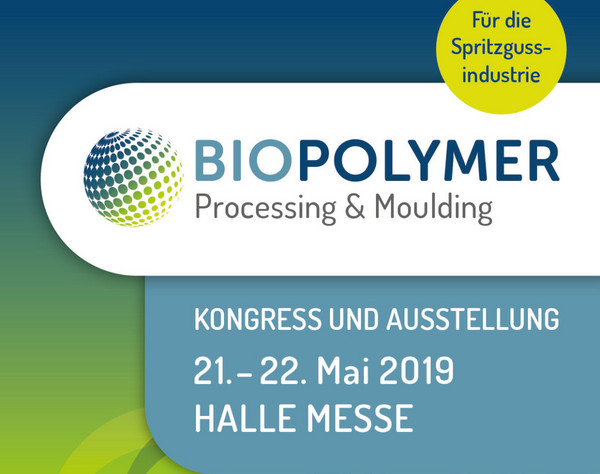A Milestone in Design History
The porcelain “ringmoccacup” was devised by Marguerite Friedlaender-Wildenhain as a design study with an eye to the opening of the airport restaurant at Leipzig-Halle Airport in 1931. The project was an unique joint venture between all department workshops of the Burg Giebichenstein School of Arts and Crafts, where Friedlaender led the ceramist education.
As the airport restaurant of Hans Wittwer was an excellent testimony of the “new architecture”, the ensemble of a handleless cup and ring-shaped saucer reflects the core idea of the Bauhaus in an exemplary way: form follows function – the cups sits stably in the ring and does not require any great balance when serving.
One of the First Bauhaus Students
Marguerite Friedlaender-Wildenhain, born 1896 in Lyon, was from 1919 part of the first generation of students of the Weimar Bauhaus. In 1925 she followed Gerhard Marcks to Halle (Saale) to the Applied Arts school “Burg Giebichenstein” where she – Germany’s first female master potter – soon took over the direction of the ceramic workshop. From 1929 to her forced emigration in 1933 she created the legendary designs of the “Halle Set” for the State Porcelain Factory (KPM) in Berlin.
Style Icon of Modernism
The Paris World Exhibition 1937 honoured Marguerite Friedlaender-Wildenhain with a silver medal for her tea service “Five o’clock”. In 1942, in Guerneville near San Francisco, she founded a work and training centre based on her Bauhaus experiences called “Pond Farm Pottery”, which attracted people of many nationalities until her death in 1985 and was declared a National Treasure of the USA in 2014. The artist is represented in the Museum of Modern Art by several works.
Rediscovery in Halle and Abroad
The ringmoccacup remained largely unknown, however. Only a photo, rediscovered at the Moritzburg Gallery in Halle (Saale), put Professor Hubert Kittel, the then Head of the Department of Ceramics/ Glass Design at Burg Giebichenstein, on its trail at the end of the 1990s. He and his team managed to produce this ingenious design from 1931 for the first time in a limited edition. These replicas were handed out to the guests of honour at the ceremonial opening of the North Runway of Leipzig-Halle Airport in 2000.
Reinterpretation with a Material of the Future
The ringmoccacup was reinterpreted in 2018 with an eye to the upcoming anniversary “100 years of Bauhaus” and on the occasion of the conference “BIOPOLYMER – Processing & Moulding” taking place in Halle: the “Edition BIOPOLYMER”, limited to 1,000 pieces, was created from biobased, biodegradable plastic. With this combination of Friedlaender’s timeless, durable design with a material of the future, the initiators bring into focus a particular aspect of sustainability: that of transience.
The project partners are thus facing an existential challenge: how can they successfully produce plastics for as many areas of application as possible, which can once again become parts of our natural environment after they have been used? This is at the same time the subject of the BIOPOLYMER Congress, which, in 2019, will for the second time be attracting injection moulders, users and scientists from Germany and abroad to Halle (Saale).
BASF SE made its material ecovio® available for the project. ecovio® is a biodegradable and biobased, globally certified plastic compound. Since 2012 it has not only been used for film and foam applications, but also as an injection moulding material. With more than 15 years of market presence in the field of certified compostable plastic materials, BASF is one of the pioneers in this area.
The Burg Giebichenstein University of Art and Design supported the Edition BIOPOLYMER with know-how and contacts. As well as some examples of the ringmoccacups produced in 2000, Prof. em. Hubert Kittel also made the presentation concept of the edition of that time available to the project partners.
The packaging was created, as back in 2000, in cooperation with the company Kurt Bock from Zeulenroda (Thuringia).
The compounding systems specialists of the Exipnos GmbH contributed an internally developed process to the project: Direct Compounding Injection Moulding (DCIM). Unlike the classic technique, this can be used to process plastics at lower temperatures and more gently – a decisive advantage in the case of biopolymers.
The design and construction of the tools were in the hands of Dr. Bryholm Formen- und Werkzeugbau GmbH & Co. KG, Pegau.
The Investment and Marketing Corporation Saxony-Anhalt (IMG) supported the “Edition BIOPOLYMER” both non-materially and financially. After all, the project combines several themes which form part of the region’s identity: the plastic industry in the Central German chemical triangle, the legacy of Halle’s university of arts and the Bauhaus, the 100th anniversary of which will be celebrated in 2019.
The idea of “Edition BIOPOLYMER” was born at POLYKUM, the Association for Polymer Development and Plastics Technology in Central Germany. The threads of the project’s realisation also run together here. The occasion was the BIOPOLYMER Congress 2018 in Halle, which, like the project itself, stands for the most important aim of the non-profit-making network: the promotion of the transfer of knowledge, innovation, and technology.





